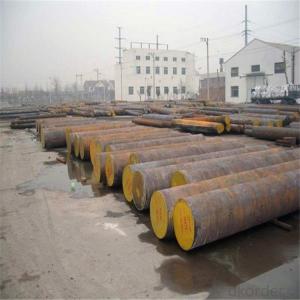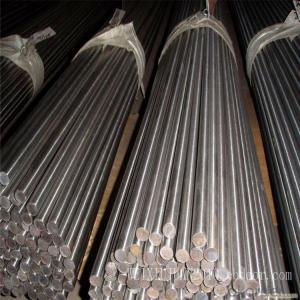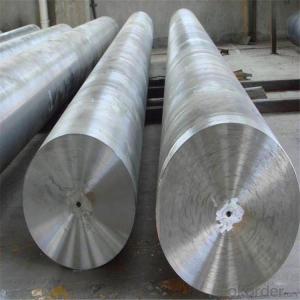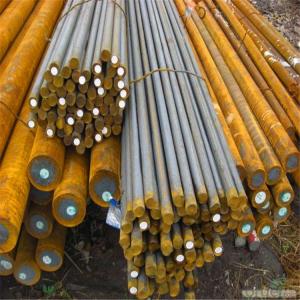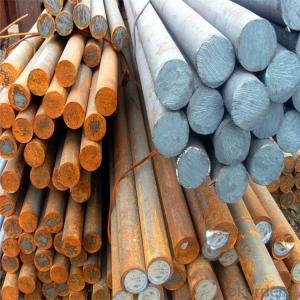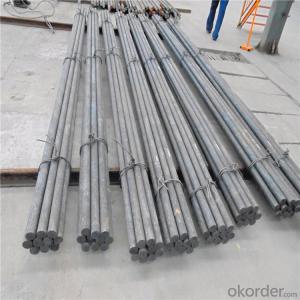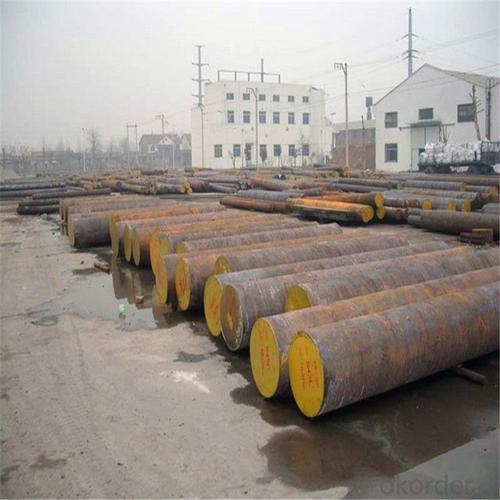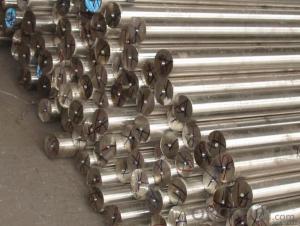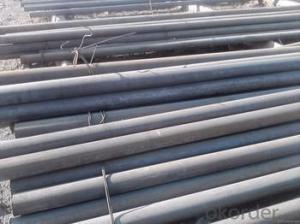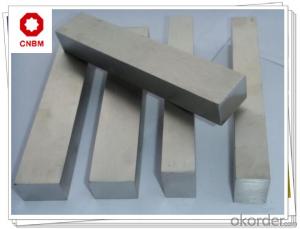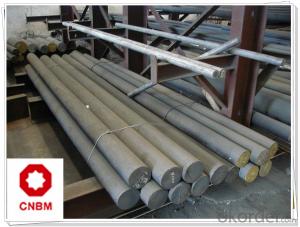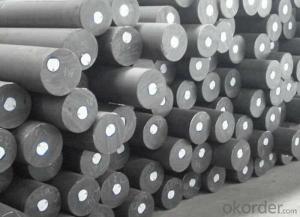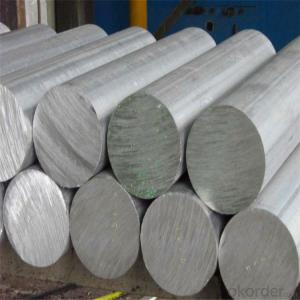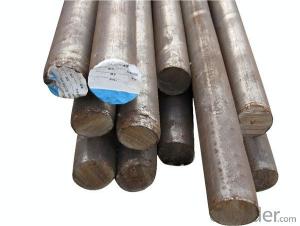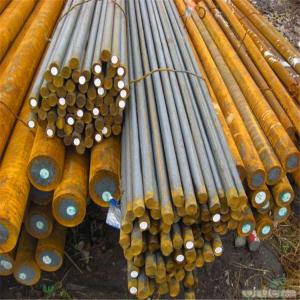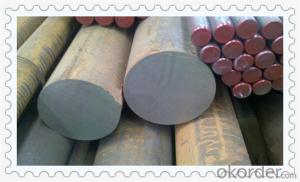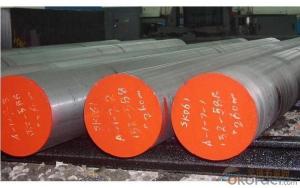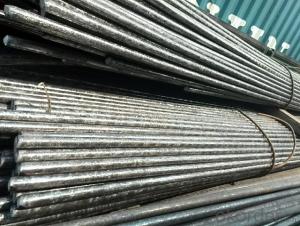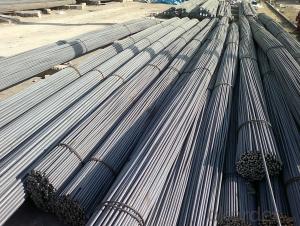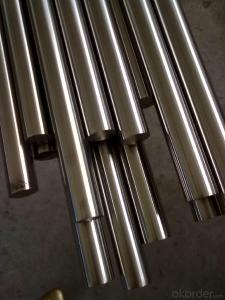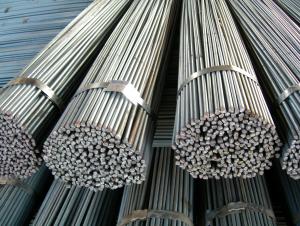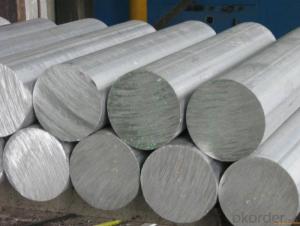MS Mild Steel SAE1020 Hot Rolled Round Bar
- Loading Port:
- Tianjin
- Payment Terms:
- TT OR LC
- Min Order Qty:
- 25 m.t.
- Supply Capability:
- 500000 m.t./month
OKorder Service Pledge
OKorder Financial Service
You Might Also Like
Specification
MS Mild Steel SAE1020 Hot Rolled Round Bar
Product Description of MS Mild Steel SAE1020 Hot Rolled Round Bar
1. Steel grade: SAE1020, 20#, C22, S20C
2. Length: 6M-12M
3. Diameter: 16mm-300mm
4. Product range: round bar, flat bar, square bar
5. Technique: Hot rolled, forged, cold drawn
Specification of MS Mild Steel SAE1020 Hot Rolled Round Bar
Material | SAE 1020 | Round bar | Dia(mm) | 16-300mm |
Process | EAF + LF + VD + Forged + Heat Treatment (optional) | Length (mm) | Max 12m | |
Heat treatment | Normalized / Annealed / Quenched / tempered | Flat bar | Thickness(mm) | 8-500mm |
Delivery condition | Hot forged +Rough machined (black surface after Q/T)+ Turned (optional) | Width(mm) | 70-200mm | |
Test | Ultrasonic test according to SEP 1921-84 D/d | Length (mm) | Max 12m |
Chemical Composition of MS Mild Steel SAE1020 Hot Rolled Round Bar
C | Si | Mn | Cr | Ni | Cu |
0.17~0.23 | 0.17~0.37 | 0.35~0.65 | ≤0.25 | ≤0.30 | ≤0.25 |
Photo Show of MS Mild Steel SAE1020 Hot Rolled Round Bar
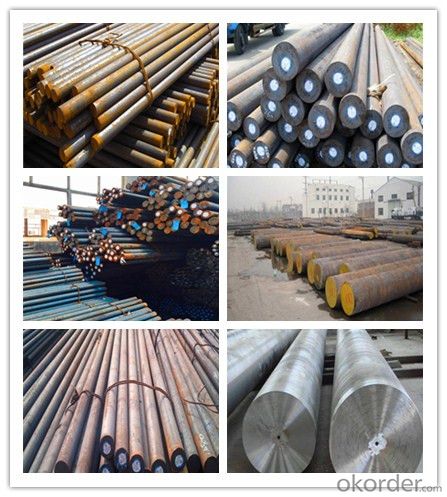
Packing and Delivery:
Packing in bundle package, or as customer's requirements.
Delivery Detail: 45 days after receiving the deposit.
Usage and Applications of MS Mild Steel SAE1020 Hot Rolled Round Bar
1. Steel round bar is used in a large number of architectural and engineering structures. Or it can be used in construction of plants for the production of steel house frames, high-voltage transmission towers, bridges, vehicles, boilers, containers, ships, etc.
2. And we can use this kind of product on the performance of the mechanical parts if the demand is not very high.
3. Some special material steel round bar can be used for main shaft of steamer, hummer shank, with big section and supper force.
Company Information
CNBM International Corporation is the most important trading platform of CNBM group.
Whith its advantages, CNBM International are mainly concentrate on Cement, Glass, Iron and Steel, Ceramics industries and devotes herself for supplying high qulity series of refractories as well as technical consultancies and logistics solutions.

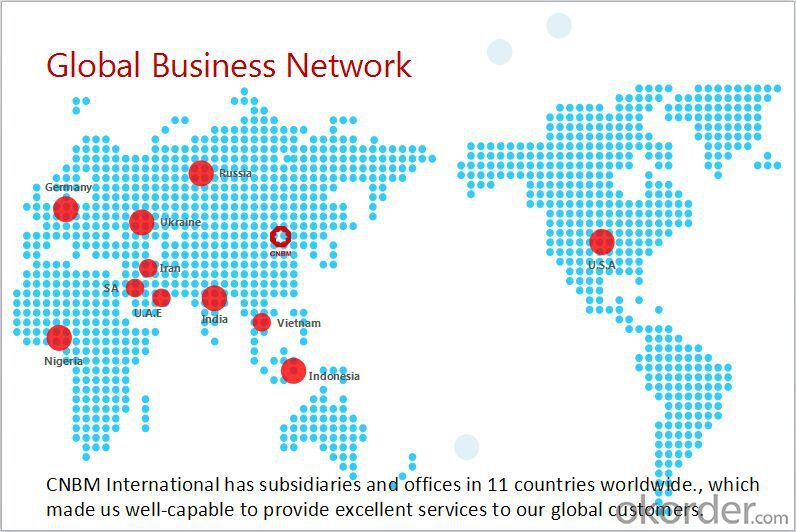
F A Q
1, Your advantages?
professional products inquiry, products knowledge train (for agents), smooth goods delivery, excellent customer solution proposale
2, Test & Certificate?
SGS test is available, customer inspection before shipping is welcome, third party inspection is no problem
3, Factory or Trading Company?
CNBM is a trading company but we have so many protocol factories and CNBM works as a trading department of these factories. Also CNBM is the holding company of many factories.
4, Payment Terms?
30% TT as deposit and 70% before delivery.
Irrevocable L/C at sight.
5, Trading Terms?
EXW, FOB, CIF, FFR, CNF
6, After-sale Service?
CNBM provides the services and support you need for every step of our cooperation. We're the business partner you can trust.
For any problem, please kindly contact us at any your convenient time.
We'll reply you in our first priority within 24 hours.
- Q: Can steel round bars be used for making stabilizer bars?
- Yes, steel round bars can be used for making stabilizer bars. Steel round bars are commonly used in various industries, including automotive, for their high strength and durability. Stabilizer bars require materials that can withstand heavy loads and provide stability, making steel round bars an ideal choice for their construction.
- Q: Can steel round bars be used for making drill bits?
- No, steel round bars cannot be directly used for making drill bits. Drill bits require specific materials and manufacturing processes to ensure the necessary hardness, sharpness, and durability.
- Q: What are the different types of steel round bars used in the manufacturing of tools?
- In tool manufacturing, a variety of steel round bars are commonly employed. Each type of steel possesses distinct properties and qualities that make it suitable for various applications. The following are some of the most frequently utilized steel round bars in tool manufacturing: 1. Carbon Steel Round Bars: These round bars are widely used in tool manufacturing due to their exceptional strength and durability, making them ideal for heavy-duty applications. Carbon steel round bars can be further categorized into low carbon, medium carbon, and high carbon steel, based on their carbon content. 2. Alloy Steel Round Bars: Alloy steel round bars are created by incorporating diverse alloying elements, such as manganese, chromium, nickel, or molybdenum, into carbon steel. This process enhances their strength, hardness, and resistance to wear and tear. Cutting tools, drills, and gears are commonly manufactured using alloy steel round bars. 3. Stainless Steel Round Bars: Stainless steel round bars are renowned for their resistance to corrosion and high tensile strength. They are frequently employed in the production of tools that require protection against rust, such as kitchen knives, surgical instruments, and automotive components. 4. Tool Steel Round Bars: Tool steel round bars are specifically designed for tool manufacturing, as the name suggests. They possess high hardness, wear resistance, and toughness, making them ideal for cutting, drilling, and shaping applications. Tool steel round bars can be further classified into various types, including high-speed steel (HSS), cold work steel, hot work steel, and shock-resistant steel, based on their specific properties. 5. Stainless Tool Steel Round Bars: Stainless tool steel round bars combine the qualities of stainless steel and tool steel. They offer good resistance to corrosion and wear, making them suitable for applications that require both properties, such as the production of molds and dies. These examples represent just a few of the diverse types of steel round bars employed in tool manufacturing. The choice of steel depends on the specific requirements of the tool and its intended application.
- Q: What is the difference between a rough turned and a seamless steel round bar?
- A rough turned steel round bar refers to a bar that has undergone a preliminary turning process, where excess material is removed to achieve a desired shape or size. On the other hand, a seamless steel round bar is manufactured without any seams or welds, ensuring a smooth and uniform surface throughout the entire length of the bar. Essentially, the difference lies in the manufacturing process and the resulting surface finish.
- Q: What are the different types of carbon steel round bars?
- There are several different types of carbon steel round bars, including low carbon steel, medium carbon steel, and high carbon steel. Each type has varying levels of carbon content, which determines its strength and hardness. Low carbon steel round bars have the lowest carbon content and are more easily welded and formed. Medium carbon steel round bars have a higher carbon content and are stronger and more durable, making them suitable for applications that require higher strength. High carbon steel round bars have the highest carbon content and are extremely strong and hard, making them ideal for applications that require maximum strength and wear resistance.
- Q: What are the advantages of using high-speed steel round bars?
- Using HSS round bars in various applications offers several advantages. Firstly, their exceptional hardness and wear resistance make them perfect for high-speed and high-temperature cutting, shaping, and machining operations. HSS round bars can withstand the heat generated in these processes without losing hardness or dulling quickly. This results in improved tool life and reduced downtime for tool changes. Secondly, HSS round bars possess excellent strength and toughness properties, enabling them to handle heavy loads and resist deformation, even in demanding applications. Their strength and toughness make them suitable for industries like aerospace, automotive, and manufacturing, where precision and reliability are crucial. Thirdly, HSS round bars provide superior cutting performance. Due to their high hardness, they retain a sharp cutting edge for a long time. This ensures efficient and precise cutting, minimizing inaccuracies or errors in the workpiece. The sharp cutting edge also contributes to improved surface finish and dimensional accuracy. Additionally, HSS round bars have good thermal conductivity, meaning they efficiently dissipate heat generated during cutting or machining operations. This prevents overheating, which can cause premature tool failure or damage. The ability to manage heat buildup helps maintain the integrity of the tool and extends its lifespan. Lastly, HSS round bars are readily available and cost-effective compared to other high-performance tool materials like carbide. This makes them a popular choice, especially in industries where cost considerations are significant. In conclusion, the advantages of using HSS round bars include exceptional hardness and wear resistance, excellent strength and toughness, superior cutting performance, good thermal conductivity, and cost-effectiveness. These advantages make HSS round bars the preferred choice for professionals and industries that require reliable and efficient cutting and machining tools.
- Q: What is the difference between hot working and cold working of steel round bars?
- Steel round bars can be shaped and manipulated using two different methods: hot working and cold working. Hot working involves shaping steel at high temperatures, typically above the steel's recrystallization temperature. This makes the material more malleable and easier to shape. The processes involved in hot working include forging, rolling, and extrusion. Hot working has several advantages. It allows for the creation of complex shapes and sizes with minimal force or energy. It also improves the mechanical properties of the steel, such as strength and toughness, by refining its grain structure. However, hot working can cause oxidation and scale formation on the steel's surface, which may require additional treatments or cleaning. On the other hand, cold working refers to shaping steel at room temperature or below its recrystallization temperature. Cold working processes include bending, drawing, and cold rolling. Unlike hot working, cold working does not require heating the steel, which reduces energy consumption and production costs. It also results in a smoother surface finish and tighter tolerances compared to hot working. Cold working can increase the hardness and strength of the steel, making it suitable for applications that require higher mechanical properties. However, it can also make the steel more brittle and prone to cracking. In conclusion, the main difference between hot working and cold working steel round bars lies in the temperature at which the shaping process takes place. Hot working is done at high temperatures, making shaping easier and improving mechanical properties. Cold working, on the other hand, is done at room temperature or below, resulting in tighter tolerances and increased hardness. The choice between hot working and cold working depends on the desired properties and characteristics of the final product.
- Q: What is the maximum weight of a steel round bar?
- The maximum weight of a steel round bar depends on its diameter and length. The weight can vary from a few pounds to several tons for larger and longer bars.
- Q: What are the different types of steel round bar surface finishes used in the aerospace industry?
- In the aerospace industry, various types of steel round bar surface finishes are employed to meet specific requirements and enhance the performance of components. Some of the common surface finishes used in the aerospace industry include: 1. Smooth Finish: This is the most basic surface finish, where the steel round bar is left with a smooth, untreated surface. It is often used when the component does not require any specific surface treatment or when further processing is needed. 2. Polished Finish: Polishing the steel round bar surface improves its aesthetic appeal and provides a high-quality, reflective surface. It can be used to enhance the appearance of aerospace components, especially those visible to passengers or in the cabin area. 3. Shot Peened Finish: Shot peening is a surface treatment process that involves bombarding the steel round bar with small metal particles or beads. This process creates compressive stresses on the surface, improving fatigue resistance and reducing the risk of stress corrosion cracking. 4. Anodized Finish: Anodizing is an electrochemical process that forms a protective oxide layer on the steel round bar's surface. This finish provides improved corrosion resistance and can be used to add color or improve paint adhesion for aerospace components. 5. Passivated Finish: Passivation involves treating the steel round bar surface with an acid solution to remove impurities and create a protective oxide layer. This finish enhances corrosion resistance, particularly in environments where exposure to moisture or chemicals is likely. 6. Zinc or Nickel Plated Finish: Plating the steel round bar with zinc or nickel can provide enhanced corrosion resistance, especially in harsh environments. These finishes are commonly used for aerospace components exposed to saltwater or acidic conditions. 7. Black Oxide Finish: Black oxide coating is a chemical conversion process that forms a black protective layer on the steel round bar. It offers increased corrosion resistance and can also provide an appealing black appearance to the component. 8. Chrome Plated Finish: Chrome plating involves depositing a thin layer of chromium onto the steel round bar's surface. This finish provides excellent wear resistance and can be used for aerospace components subjected to high friction or abrasion. These various types of steel round bar surface finishes in the aerospace industry serve different purposes, such as corrosion resistance, wear resistance, improved aesthetics, or fatigue resistance. The selection of the appropriate finish depends on the specific requirements and performance expectations of the aerospace component in question.
- Q: What are the advantages of using niobium-alloy steel round bars?
- Niobium-alloy steel round bars offer numerous benefits. Firstly, they possess exceptional strength and toughness. By incorporating niobium, the steel's strength increases while maintaining its ductility, making it ideal for applications requiring durability and high strength. Consequently, these round bars can withstand heavy loads and shocks without deforming or breaking easily. Secondly, niobium-alloy steel exhibits high resistance to corrosion. Consequently, it proves suitable for use in harsh environments where exposure to moisture, chemicals, or corrosive substances is common. The corrosion resistance ensures that the round bars remain intact and retain their structural integrity over time, reducing the need for frequent replacements and maintenance. Moreover, niobium-alloy steel demonstrates excellent weldability and formability. It can be effortlessly welded and fabricated into various shapes and sizes, making it adaptable to different manufacturing processes and applications. This adaptability enables the production of custom-designed round bars that meet specific project requirements. Additionally, niobium-alloy steel possesses superior heat resistance properties. It can endure high temperatures without losing strength or experiencing significant changes in its mechanical properties. Thus, it proves suitable for applications involving exposure to extreme heat or thermal cycling, such as in the aerospace or automotive industries. Furthermore, niobium-alloy steel is renowned for its exceptional fatigue resistance. It possesses a high endurance limit, enabling it to withstand repeated loading and unloading cycles without experiencing fatigue failure. This quality makes niobium-alloy steel round bars ideal for applications involving dynamic or cyclic loading, such as in structural components or machinery. In conclusion, the utilization of niobium-alloy steel round bars grants advantages such as high strength, corrosion resistance, weldability, formability, heat resistance, and fatigue resistance. These properties make niobium-alloy steel a reliable and cost-effective choice for numerous industries and applications.
Send your message to us
MS Mild Steel SAE1020 Hot Rolled Round Bar
- Loading Port:
- Tianjin
- Payment Terms:
- TT OR LC
- Min Order Qty:
- 25 m.t.
- Supply Capability:
- 500000 m.t./month
OKorder Service Pledge
OKorder Financial Service
Similar products
Hot products
Hot Searches
Related keywords
